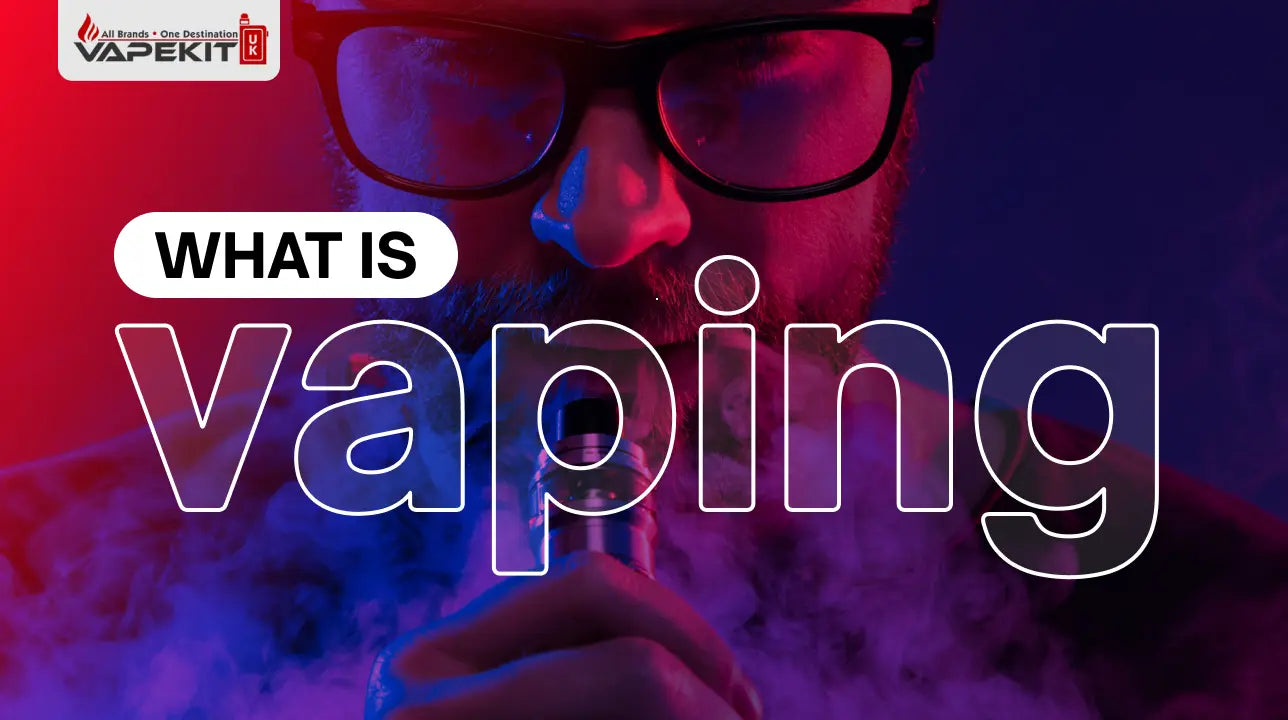
What Is Vaping? A Beginner’s Guide (2025)
Vaping has become increasingly popular in recent years, especially among young adults and those looking for an alternative to traditional cigarettes. You’ve probably seen someone puffing out a cloud of vapor and wondered what it’s all about. But what exactly is vaping? How does it work, and is it really safer than smoking? In this blog, we’ll break down everything you need to know about vaping in simple, easy-to-understand terms.
What Is Vaping?
Vaping is the act of inhaling and exhaling vapor produced by an electronic device called a vape or e-cigarette. Instead of burning tobacco like in traditional cigarettes, vaping involves heating a liquid, known as e-liquid or vape juice, which turns into a vapor that the user inhales.
E-liquids usually contain propylene glycol (PG), vegetable glycerin (VG), flavorings, and nicotine (though some are nicotine-free). The wide variety of flavors and the lack of smoke are part of what makes vaping attractive to many users.
How Does Vaping Work?
Vaping devices, whether simple disposables or advanced vape kits, generally work using the same basic components:
1. Battery: Powers the device and heats the coil.
2. Coil/Atomizer: Heats the e-liquid to create vapor.
3. Tank or Pod: Holds the e-liquid.
4. Mouthpiece: Where you inhale the vapor.
The Process:
1. You press a button or simply inhale, depending on the device.
2. The battery activates the coil.
3. The coil heats up the e-liquid.
4. The liquid turns into vapor.
5. You inhale the vapor through the mouthpiece.
Modern vape devices range from disposable vapes, which are easy to use, to rechargeable vape kits with customizable settings.
What Is the Difference Between Vaping and Smoking Cigarettes?
While both vaping and smoking deliver nicotine, the methods and risks involved are quite different.
|
Factor |
Vaping |
Smoking |
|
Delivery Method |
Heats e-liquid into vapor |
Burns tobacco to create smoke |
|
Combustion |
No combustion |
Yes, combustion occurs |
|
Toxins |
Fewer known toxins |
Releases tar, carbon monoxide, and carcinogens |
|
Smell |
Mild or fruity smell |
Strong, lingering tobacco odor |
|
Customization |
Wide range of flavors and nicotine levels |
Limited customization |
While vaping is generally considered less harmful than smoking, it’s not completely risk-free.
Risks and Benefits of Vaping
Potential Benefits:
1. Less harmful than smoking: No combustion means fewer toxins.
2. Odorless or pleasant-smelling: Doesn’t leave behind a strong smoke smell.
3. Customizable experience: Variety of flavors and nicotine strengths.
4. Helpful for quitting smoking: Some smokers switch to vaping as a step-down method.
Potential Risks:
Health concerns: Vaping still exposes lungs to chemicals, and long-term effects are not fully known.
1. Nicotine addiction: Many e-liquids contain nicotine, which is addictive.
2. Youth appeal: Flavored vapes may attract younger, non-smoker users.
3. Battery issues: Poor-quality devices may overheat or malfunction.
It's important to note that while vaping might be less harmful than smoking, it is not completely safe, especially for non-smokers, pregnant women, and adolescents.
FAQs- What Is Vaping?
Q1: Is vaping safe?
Vaping is considered less harmful than smoking, but it’s not entirely safe. It still delivers chemicals and potentially addictive nicotine.
Q2: Does vaping help you quit smoking?
Yes, many people use vaping as a tool to quit smoking. However, success varies, and it's best done with medical or behavioral support.
Q3: What is in vape juice?
Vape juice usually contains propylene glycol, vegetable glycerin, flavorings, and optional nicotine.
Q4: Can you vape without nicotine?
Yes, nicotine-free e-liquids are widely available and used by those who just enjoy the flavors or ritual of vaping.
Q5: Is secondhand vapor harmful?
Secondhand vapor is generally considered less dangerous than secondhand smoke, but it’s still not completely harmless, especially in enclosed spaces.
Conclusion
Vaping is a modern alternative to traditional smoking that involves inhaling vapor from heated e-liquids. While it eliminates many of the harmful effects of burning tobacco, it's not risk-free, especially when it comes to nicotine addiction and unknown long-term effects. If you’re considering vaping, especially as a smoking cessation tool, it's best to understand how it works, weigh the pros and cons, and consult a healthcare professional if needed.
Whether you’re exploring vaping for the first time or just want to stay informed, remember: knowledge is the first step to making safer choices.




